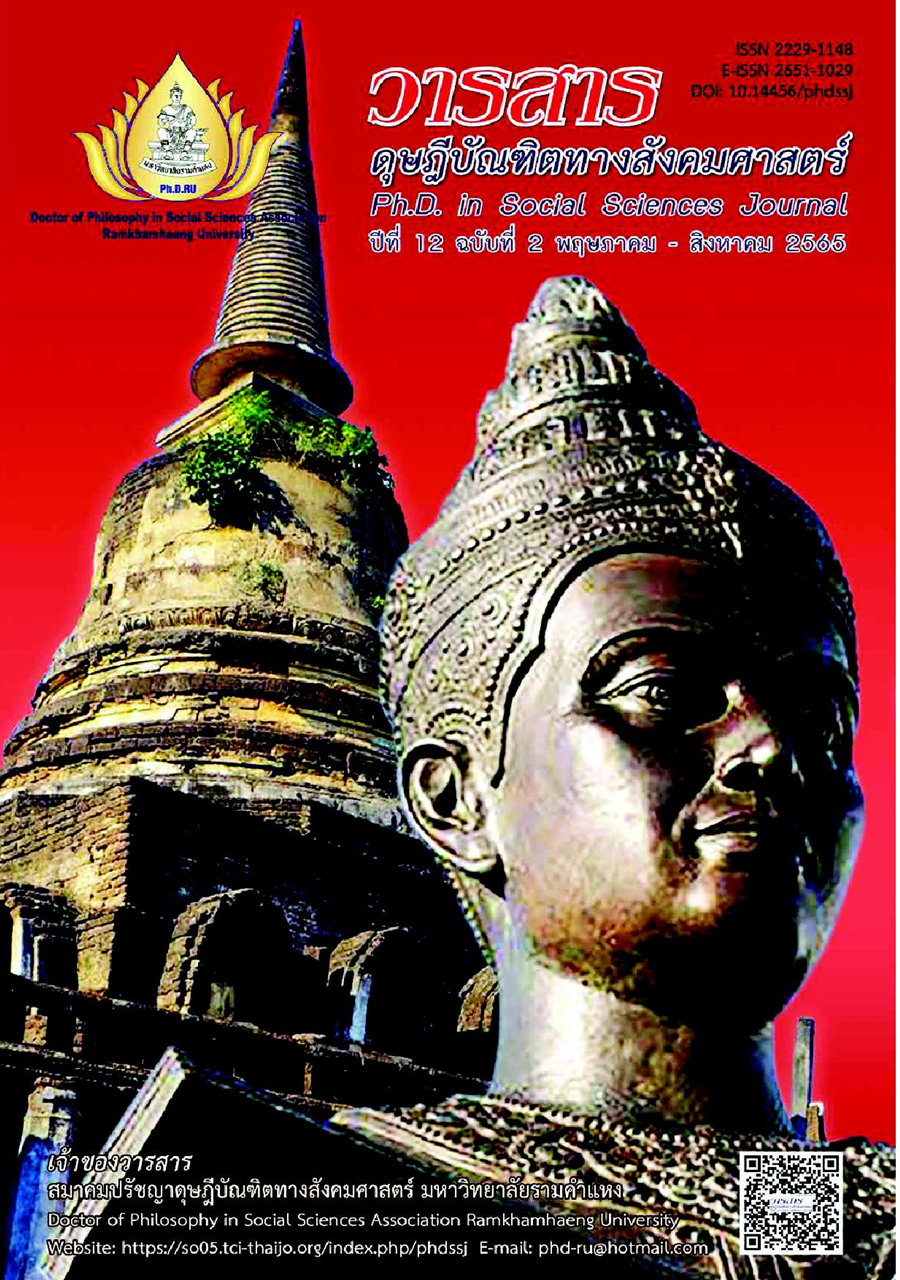Factors Affecting Brand Loyalty of Foreign Tourist Destinations in Thailand
Main Article Content
Abstract
This research article aims to study brand perception, brand image, and the perception of brand quality that affects brand loyalty of foreign tourists to the destination brand in Thailand. The sample group used in this research is foreign tourists, who have experience previously traveling to Thailand and those who have not, in a total of 400 people. These people were selected by quota sampling. The instrument used for data collection was a questionnaire construct. The content validity was between 0.67-1.00 and the reliability of the questionnaire was between 0.88-0.93. The data were analyzed by finding the percentage, mean, and standard deviation. One-way Analysis of Variance, the paired difference test using LSD and multiple regression analysis with Entering method.
The results show that: regarding the factors related to brand awareness, respondents have an overall brand awareness at a high level, namely, being able to quickly recognize that Thailand is a tourist destination. On the factors related to brand image, respondents have a high level of an overall brand image including a visit or a trip to Thailand reflecting one’s own identity. For factors related to brand quality awareness, respondents have opinions about brand quality awareness in general at a high level, that is, Thailand always offers quality tourism. The hypothesis testing found that brand awareness of brand image and perception of brand quality affect the brand loyalty of foreign tourist destinations in Thailand. and together can predict 75%.
Article Details

This work is licensed under a Creative Commons Attribution-NonCommercial-NoDerivatives 4.0 International License.
Academic articles, research articles, and book reviews in the Ph.D. in Social Sciences Journal are author’s opinions, and not the publisher’s, and is not the responsibility of the Ph.D. in Social Sciences Journal Philosophy Association, Ramkhamhaeng University. (In the case that research is done on human, the researcher has to be trained in Ethics for Doing Research on Human Training and has to produce the evidence of the training).
References
Aaker, D. A. (1991). Managing brand equity: Capitalizing on the value of a brand name. The Free Press.
Artuger, B., Çetinsöz, C., & Kilic, I. (2013). The effect of destination image on destination loyalty: An application in Alanya. European Journal of Business and Management, 5(13),124-136.
Boo, S. J., Busser, J., & Baloglu, S. (2009). A model of customer-based brand equity and its application to multiple destinations. Tourism Management, 30(2), 219-231.
Crouch, G., & Ritchie, J. (2000). The competitive destination: A sustainability perspective. Tourism Management, 21(1), 1-7.
Enright, M. J., & Newton, J. (2005). Determinants of tourism destination competitiveness in Asia Pacific: Comprehensiveness and universality. Journal of Travel Research, 43(4), 339-350.
Gartner, W. C., & Ruzzier, M. K. (2011). Tourism destination brand equity dimensions: Renewal versus repeat market. Journal of Travel Research, 50(5), 471-481.
Hair, J. F., Jr., Black, W. C., Babin, B. J., & Anderson, R. E. (2014). Multivariate data analysis (7th ed.). Pearson.
Hemmonsbey, J., & Knott, B. (2016). Branding an African city through sport: The role of stakeholder engagement. African Journal of Hospitality, Tourism and Leisure, 5(3),1-14.
Keller, K. L. (1993). Conceptualizing measuring and managing customer-based brand equity. Journal of Marketing, 57(1), 1-22.
Keller, K. L. (2003). Strategic brand management: Building measuring and managing brand equity (2nd ed.). Prentice Hall.
Konecnik, M., & Gartner, W. C. (2007). Customer-based brand equity for a destination. Annals of Tourism Research, 34(2), 400-421.
Krejcie, R. V., & Morgan, D. W. (1970). Determining sample size for research activities. Educational and Psychological Measurement, 30(3), 607-610.
Ministry of Tourism & Sports. (2019). Domestic tourism statistics Q1-Q4 (classify by region and province). Retrieved from https://www.mots.go.th/more_news_new.php?cid=531 [In Thai]
National Statistical Office. (2019). Statistics of international tourist arrivals to Thailand, 2010-2019. Retrieved from http://statbbi.nso.go.th/staticreport/page/sector/th/17.aspx [In Thai]
Pike, S. (2007). Consumer-based brand equity for destinations: Practical DMO performance measures. Journal of Travel & Tourism Marketing, 22(1), 51-61.
Promburom, T., & Kimpakorn, N. (2015). Perception of international tourists on Thailand tourism brand under the “Amazing Thailand” campaign. Journal of Thai Hospitality and Tourism, 10(1), 30-42. [In Thai]
Prommaha, J. (2019). Guidelines for identity development and image perception of Thai brand in health and wellness tourism. Journal of Thai Hospitality and Tourism, 14(2), 77-90. [In Thai]
Rajesh, R. (2013). Impact of tourist perceptions, destination image and tourist satisfaction on destination loyalty: A conceptual model. PASOS. Revista de Turismo y Patrimonio Cultural, 11(3), 67-78.
Ritchie, J. R. B., & Crouch, G. I. (2003). The competitive destination: A sustainable tourism perspective. Cabi. Centre for Agriculture and Bioscience International.
Valle, P. O. D., Guerreiro, M., Mendes, J., & Silva, J. A. (2011). The cultural offer as a tourist product in coastal destinations: The case of Algarve, Portugal. Tourism and Hospitality Research, 11(4), 233-247.


